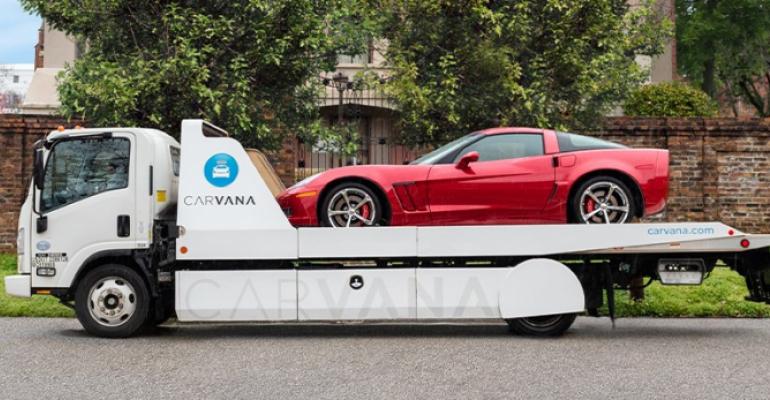Dealers should pay attention to Wall Street Journal reports that announce Carvana will lay off 12% of its workforce and faces tumbling stock prices after a reported first-quarter loss of $260 million.
The U.S.-based e-commerce online platform provides the same services as brick-and-mortar used car dealerships. Three Ivy League alumnae founded Carvana in 2012 and it made it to the Fortune 500 in 2021. An internal email by Carvana CEO Ernie Garcia III and reviewed by the WSJ reports the company overshot its growth strategy and plans to cut 2,500 workers
The company’s strategic missteps herald a shift and perhaps a flaw in the understanding of how consumers approach car buying, K.C. Boyce, vice president of Escalent, tells Wards. Respondents to the market-research company’s surveys show that shoppers highly prize dealership interaction.
“What we found, pretty overwhelmingly, is that consumers prefer to buy their vehicles from dealerships,” Boyce tells Wards. “They want to do test drives, to touch and feel and see vehicles. When we look at the macro picture, the idea that (car buying) is going to move entirely online is fundamentally flawed.”
A survey by Escalent found that only 20% of respondents who do not own Teslas prefer that automaker’s direct-to-consumer sales approach. The majority of respondents prefer to rely on dealerships for financing (60%), delivery (85%) and repairs and services (79%). Almost half of the respondents (45%) prefer to have dealership staff educate them about various models.
Nick Boustead, director of sales for The Taverna Collection, West Park, FL., says that data squares with what sales staff learn from the approximately 150 luxury-vehicle sales per month.
“When you buy a 2-year-old Honda Civic that is still under factory warranty, you don’t really need to see it. But when you are buying slightly older cars or more complex cars, it’s different,” he tells Wards. “So, yes, we believe in the hybrid model. Our customers can fly in, but they also don’t have to leave their couches if they don’t want to.”
Whatever used or new cars they sell, Boyce suggests dealers look at their customer base to decide what hybrid model works best for them. Technology that enables online educational chats about specific cars and allows for F&I paperwork completion are two ways to optimize customers’ time.
“Cutting some of these steps that traditionally have been done at dealerships makes sense from customer standpoints,” Boyce says. “But, again, there’s just something about that physical interaction with test drives and conversations that you can’t replicate online.”





